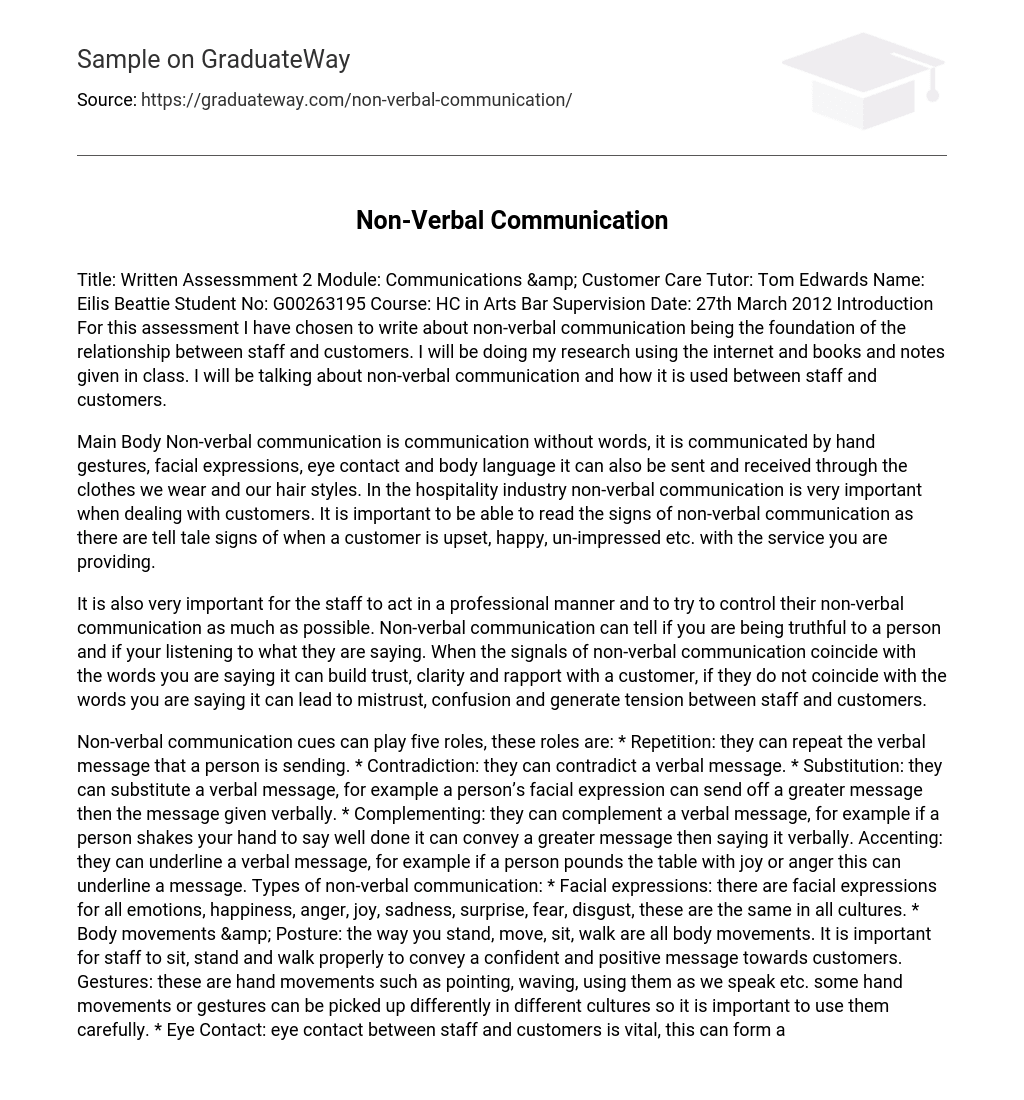Introduction
This assessment aims to examine the importance of non-verbal communication in establishing staff-customer relationships. To gain insights, we will utilize various sources including online research, books, and class materials. The primary focus will be on understanding how non-verbal communication affects staff-customer interactions.
Main Body
Various forms of non-verbal communication are present in the hospitality industry, including hand gestures, facial expressions, eye contact, and body language. Additionally, clothing choices and hairstyles can also convey messages. It is crucial to recognize and understand these non-verbal cues when interacting with customers as they provide valuable information about their emotions, whether it be dissatisfaction, contentment or indifference towards the service.
Staff members must behave professionally and effectively manage their non-verbal communication, as it is essential. Non-verbal cues can demonstrate sincerity and attentive listening, which helps build trust, understanding, and positive rapport with customers. Conversely, when non-verbal signals clash with spoken words, it can lead to distrust, confusion, and tension between staff and customers.
Non-verbal communication cues can serve five roles:
- Repetition: they can repeat the verbal message that a person is sending.
- Contradiction: they can contradict a verbal message.
- Substitution: they can substitute a verbal message, for example a person’s facial expression can send off a greater message then the message given verbally.
- Complementing: they can complement a verbal message, for example if a person shakes your hand to say well done it can convey a greater message then saying it verbally.
- Accenting: they can underline a verbal message, for example if a person pounds the table with joy or anger this can underline a message.
Conclusion
I encountered difficulties with this assessment due to a lack of available information regarding the impact of non-verbal communication on staff-customer relationships. Despite discovering a useful website about non-verbal communication in general, it offered limited insights into staff-customer communication. Consequently, my response addressed the diverse functions of non-verbal communication, various forms it can take, and its importance within the hospitality industry.
References
- http://www. helpguide. org/mental/eq6_nonverbal_communication. htm





